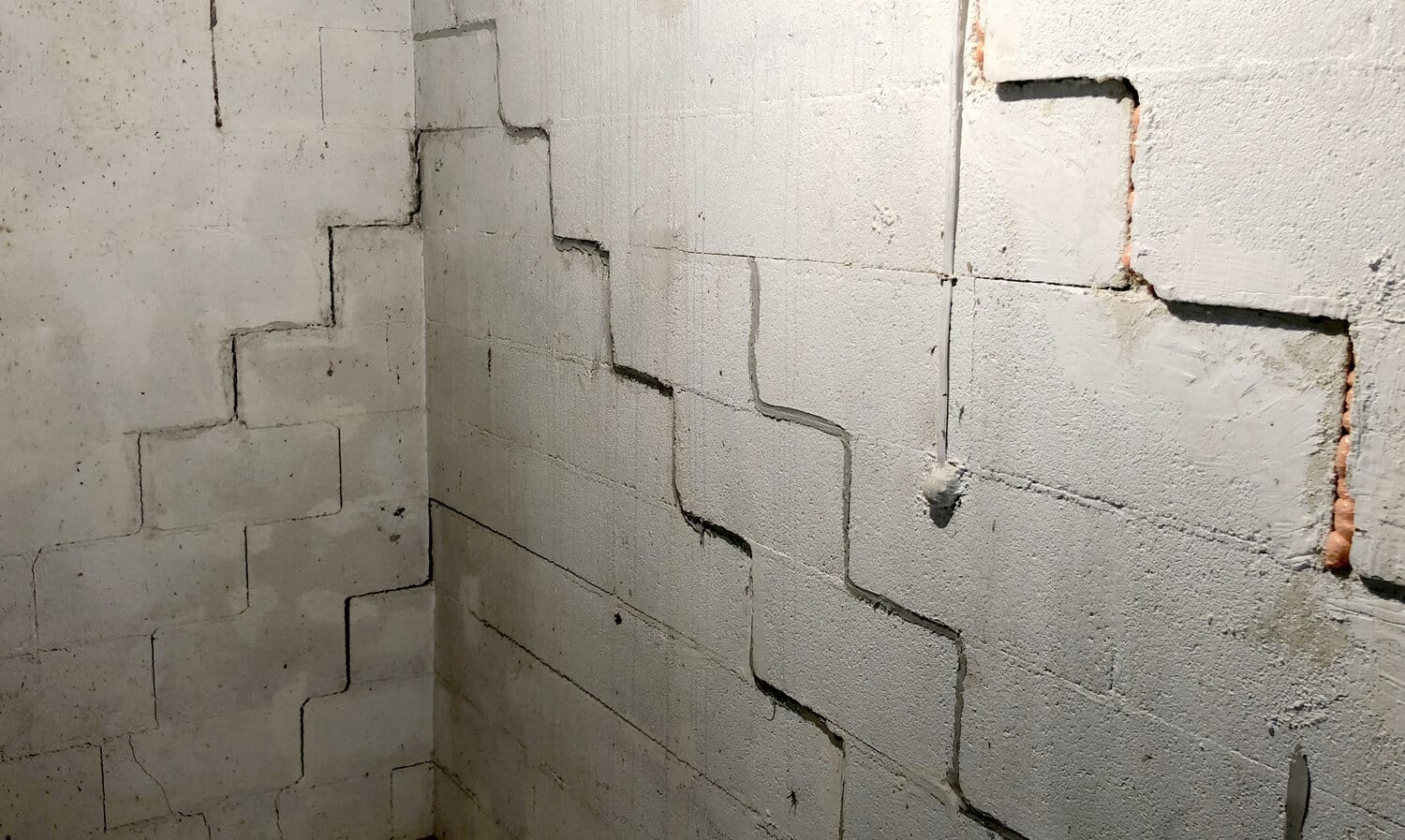
You’ve likely spent time and resources maintaining the visible parts of your home, but what about your basement? It’s easy to overlook, yet it’s prone to a host of problems that can escalate into major concerns. Think moisture intrusion, structural damage, and even pest infestations. Not to mention the potential health hazards of mold growth due to poor ventilation. With such a wide range of possible issues, wouldn’t you want to know more about what’s lurking beneath your feet?
Key Takeaways
- Inspectors often discover moisture issues, such as leaks, condensation, or signs of mold growth.
- Structural integrity issues like foundation cracks and wall bowing are common problems found in basements.
- Pest infestations, including rodents, cockroaches, and termites, are frequently identified during inspections.
- Insulation deterioration and poor ventilation can be prevalent issues, impacting energy efficiency and air quality.
- Inspectors often recommend professional assistance for complex issues like major leaks, ventilation challenges, or significant structural concerns.
Identifying Basement Moisture Problems
Many homeowners face the dreaded challenge of basement moisture problems. You might be one of them, constantly battling the dampness that can lead to a multitude of issues. It’s essential to identify moisture sources to tackle this problem effectively.
Moisture sources can vary. They might be as obvious as a leaking pipe or as subtle as condensation due to poor ventilation. You’ve got to be diligent, inspect your basement thoroughly. Look for water stains on the walls or floor. Notice any musty smell? That’s a dead giveaway for moisture issues.
Once you’ve identified the sources, you can start exploring drainage solutions. You don’t want water pooling around your home’s foundation, do you? Properly installed gutters and downspouts can direct rainwater away from your home.
Consider adding a French drain system or a sump pump for heavy rainfall areas.
Understanding Structural Issues
Aside from moisture problems, structural issues in your basement can pose significant challenges. Movements in the soil around your home can impact foundation stability, causing your basement walls to bow or crack.
These signs shouldn’t be ignored as they can escalate into more serious problems, potentially compromising the safety of your entire home.
Crack assessment is crucial in understanding these structural issues. Not all cracks are cause for concern. Hairline cracks in the concrete are often superficial and don’t affect the structural integrity of your home.
However, larger cracks or those growing wider might indicate a more serious problem. If you spot horizontal or vertical cracks larger than 1/8 inch, it’s time to call in a professional.
Furthermore, observe if your doors or windows stick when you try to open or close them. This could be a sign of a shifting foundation.
Look out as well for gaps between the wall and floor or ceiling. These are critical indications that there might be a problem with your foundation stability.
Navigating Pest Infestations
No one wants creepy crawlies in their basement, right?
Let’s get you up to speed on identifying common basement pests, effective methods for pest control, and ways to prevent future infestations.
You’ll be surprised at how simple it can be to maintain a pest-free basement.
Identifying Common Basement Pests
Crawling, creeping, and skittering, basement pests can quickly become a homeowner’s worst nightmare. The key to overcoming this fear is understanding pest identification techniques. Knowledge is power, and it’s your greatest weapon against these unwelcome visitors.
Firstly, look out for signs of activity. This could be anything from droppings to damage on your belongings.
Second, listen. Many pests, like rats and mice, can be heard moving around, especially at night.
Finally, don’t be afraid to get down and dirty. Many pests prefer to hide in dark, damp places, so you’ll need to search thoroughly.
Now, let’s talk common pest species. Cockroaches, rodents, and termites are often found in basements.
Cockroaches are attracted to damp, dark places and are a common sight in many basements.
Rodents, on the other hand, look for warm, hidden spots to nest.
Termites, while less common, can cause serious structural damage if left unchecked.
Effective Pest Control Methods
So, you’ve identified the pests in your basement. Now, it’s time to take action. Your best bet is an approach known as integrated pest management (IPM). This method combines multiple strategies to effectively manage pests while minimizing harm to you and the environment.
- Identify and Monitor: You’ve already identified the pests, but continuous monitoring is crucial. You’ll want to check your basement regularly to ensure the pests haven’t returned or multiplied.
- Prevention: IPM involves making your basement unattractive to pests. This could mean sealing off entry points or removing sources of food and water.
- Control: If the pests persist, it’s time for control measures. IPM recommends starting with the least harmful methods, such as natural repellents.
Natural repellents can be incredibly effective. For instance, peppermint oil can deter mice, while citrus peel can repel spiders.
However, if these methods don’t cut it, you may need to escalate to traps or pesticides. Just remember, the goal of IPM is to manage pests effectively while reducing risks to human health and the environment.
With this approach, you’ll be well on your way to a pest-free basement.
Preventing Future Infestations
Once you’ve tackled your pest problem, your sights should firmly be on prevention. The key here is vigilance; you can’t afford to let your guard down. You need to adopt effective pest prevention strategies that’ll ensure pests don’t make a comeback.
Start by keeping your basement clean and clutter-free. Pests like rodents and insects love hiding in dark, cluttered places. Regular cleaning reduces hiding spots, making your basement less attractive to pests.
Sealing your basement is another crucial step. Use proven basement sealing techniques to block entry points for pests. This includes sealing cracks and crevices in walls and floors, as well as around windows and doors. Remember, even the smallest crack can be an open invitation to pests.
Also, consider investing in a dehumidifier. Many pests are attracted to damp environments, so keeping your basement dry can deter them. Regularly inspect your basement for signs of pests, and act quickly if you spot anything suspicious.
Lastly, don’t underestimate the power of professional help. Pest control professionals can provide valuable advice and services to keep your basement pest-free. Prevention is always better, and usually cheaper, than dealing with an infestation.
The Dangers of Mold Growth
You’ve tackled the pests, now let’s turn our attention to a silent threat: mold.
Don’t underestimate this unassuming fungus; it can pose serious health risks.
In the next section, we’ll uncover ways to prevent its growth in your basement.
Health Risks of Mold
Have you ever peeked into your basement and spotted a strange, dark growth on the walls or corners? That’s mold, and it’s not just an eyesore. Mold exposure can lead to a host of health problems, especially if left untreated.
Mold is a potent allergen and can cause severe respiratory issues. If you’ve been coughing, wheezing, or experiencing shortness of breath, it mightn’t be just a common cold. Prolonged exposure to mold can cause chronic respiratory diseases, making it harder for you to breathe over time.
There are other health symptoms related to mold exposure too. Here are three that you should keep an eye out for:
- Skin irritation: Mold can cause rashes or hives, especially on sensitive skin.
- Eye irritation: If your eyes are constantly red, itchy, or watery, you might’ve a mold problem.
- Chronic fatigue: Mold exposure can leave you feeling tired all the time, even after a full night’s sleep.
Don’t ignore these symptoms. Mold remediation is crucial, not just for the health of your home, but for your own well-being.
Don’t let the dangers of mold growth in your basement compromise your health.
Preventing Basement Mold Growth
While it’s crucial to recognize the health risks associated with basement mold growth, it’s even more important to prevent it from happening in the first place. Mold prevention strategies can be your best defense against this silent intruder.
Firstly, you need to keep your basement dry. Mold loves moisture, so it’s crucial to control the humidity level in this area of your home. Invest in a quality dehumidifier and regularly monitor its efficiency.
Humidity control methods, such as proper ventilation and insulation, can drastically reduce the chances of mold growth. Also, make sure to swiftly repair any leaks or water damage that you come across.
Secondly, consider using mold-resistant products like paints and building materials. These items can provide an extra layer of protection against potential mold growth.
Lastly, don’t forget about regular cleaning. Basements often become a storage area for unused items, which can collect dust and moisture, creating the perfect environment for mold.
Regularly cleaning and decluttering can help prevent this.
Recognizing Poor Insulation Issues
In the world of basement problems, poor insulation issues are a common, yet often overlooked, culprit.
When your basement’s insulation isn’t performing as it should, you’re not only compromising your home’s energy efficiency but also setting the stage for other problems such as condensation, mold, and high energy bills.
Knowing what to look for can help you spot poor insulation issues.
Here’s a simple three-step guide:
- Check the Type of Insulation: Not all insulation materials are created equal. Some materials may be less effective in preventing heat transfer, leading to energy inefficiency. That’s why it’s important to know the type of insulation installed in your basement.
- Spot Signs of Deterioration: Insulation doesn’t last forever. If it’s damaged, wet, or moldy, it won’t work effectively. So, keep an eye out for these signs.
- Assess Temperature Fluctuations: If your basement feels too cold in the winter or too hot in the summer, it’s likely a sign of poor insulation.
Handling Basement Ventilation Challenges
Proper ventilation in your basement can be a tricky challenge to tackle. As you might know, ventilation systems play a crucial role in maintaining a healthy and safe basement. It’s all about air circulation. Without it, your basement can become a breeding ground for mold and mildew, leading to health hazards and structural damage.
Below is a simple table outlining common basement ventilation challenges, their signs, and potential solutions.
| Challenge | Signs | Solution |
|---|---|---|
| Poor Air Circulation | Stale air, mold growth | Install exhaust fans |
| Inadequate Ventilation | High humidity, condensation | Upgrade ventilation systems |
| Blocked Vents | Reduced airflow, dust buildup | Regular cleaning and maintenance |
| Incorrect Vent Placement | Uneven temperature, damp spots | Professional assessment for repositioning |
| Lack of Fresh Air Intake | Musty smell, high CO2 level | Install intake vents |
You can’t afford to ignore these challenges. If you feel out of your depth, consider consulting a professional. They’ll help ensure your basement ventilation is up to par, providing a safer, healthier space for you and your family. Remember, a well-ventilated basement is a happy basement.
Frequently Asked Questions
What Are the Common Causes of Basement Flooding?
Your basement can flood due to various reasons. It might be because your home’s drainage solutions aren’t effective enough or there are cracks in the foundations.
Waterproofing techniques can deteriorate over time, leading to leaks. Heavy rainfall or melting snow can overwhelm your drainage and cause flooding.
Additionally, sewer backups can result in basement flooding. Therefore, it’s crucial to maintain your home’s drainage systems and ensure the effectiveness of your waterproofing techniques.
How Often Should a Basement Be Inspected for Potential Issues?
You’re asking about basement maintenance, specifically, inspection frequency.
It’s best to inspect your basement at least twice a year. However, if you’ve had issues like flooding before, you might want to do it more often.
Regular inspections help you catch potential problems early.
Don’t forget, it’s not just about avoiding disasters, it’s also about maintaining your home’s value.
What Are the Typical Costs of Repairing Common Basement Problems?
You’re probably wondering about repair costs for typical basement issues.
It’s hard to pin down exact figures because it depends on your location and the severity of the problem.
However, on average, you’re looking at around $4,000 for foundation repairs.
For minor issues like sealing cracks, it’s about $500.
It gets pricey for major water damage, potentially up to $10,000.
How Can I Prevent Basement Problems Before They Occur?
You can prevent basement problems by implementing effective drainage solutions and focusing on moisture control.
It’s crucial to keep water away from your home’s foundation. Install gutters and downspouts, ensure the ground slopes away from your house and consider a sump pump if necessary.
Also, use a dehumidifier to control humidity levels and prevent condensation.
Regular inspections can help identify potential issues before they become major problems.
Are There Signs of Basement Problems That Only Professionals Can Identify?
Yes, there are signs of basement problems that only a professional can spot.
They’re trained to identify hidden damage that you might overlook. Structural integrity is something they pay close attention to.
They’ll look for subtle signs of water damage, cracks that might indicate foundation issues, and unusual shifting.
It’s always a good idea to hire a pro if you’re unsure, as some issues aren’t apparent to the untrained eye.
Conclusion
So, you’ve got a handle on common basement issues, right? Moisture, pests, structural problems, poor insulation, and ventilation issues are all on your radar. Remember, it’s not just about spotting these problems, but also tackling them head-on. Regular inspections are key to maintaining a safe, healthy basement. Don’t let minor issues escalate into major headaches. Stay vigilant, take action, and keep your basement in tip-top shape. You’ve got this!

Seal-tite Basement Waterproofing Co. is a full service basement environment contractor. We carry an A+ Better Business Bureau rating. We repaired over 40,000 homes and structures in Virginia, West Virginia, Tennessee, and North Carolina. We are fully insured and licensed. We have worked in all types of locations, including residential and commercial locations, government agencies, colleges, hospitals, churches, and condo associations.
Seal-tite® offers a lifetime transferable warranty. We carry a Class A Contractor’s License and we are fully insured. Our satisfied customers range from government agencies to businesses, hospitals, colleges, churches, and thousands of homeowners. Your home is probably the single largest investment you will make in your lifetime. Don’t wait, call Seal-tite® to help make your home dry, safe and livable.

